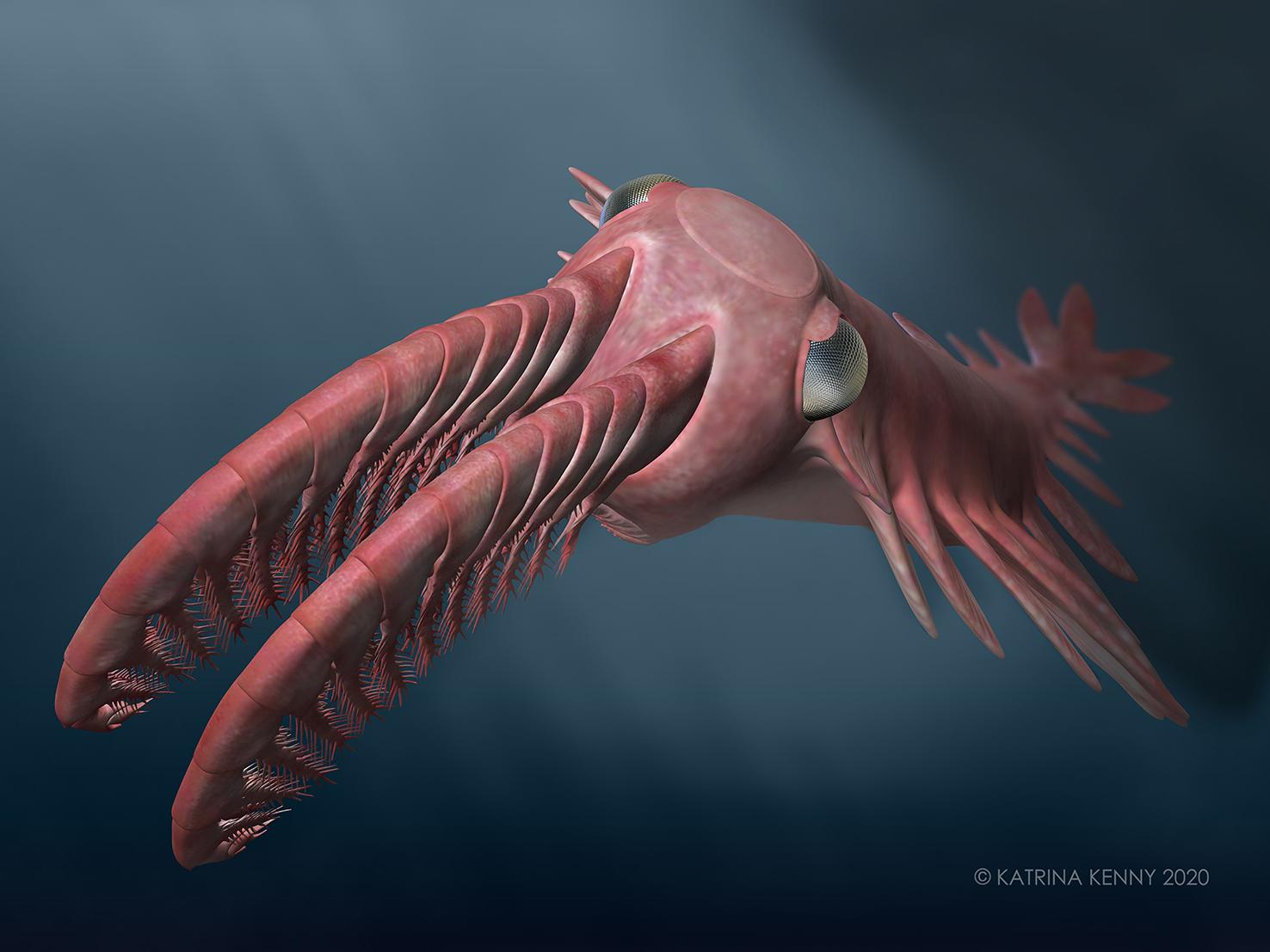
An artist’s reconstruction of ‘Anomalocaris’ briggsi swimming within the twilight zone. Image: Katrina Kenny
Ancient deep sea creatures called radiodonts had incredible vision that likely drove an evolutionary arms race according to new research published today.
The international study, led by Professor John Paterson from the University of New England’s Palaeoscience Research Centre, in collaboration with the University of Adelaide, the South Australian Museum and The Natural History Museum (UK), found that radiodonts developed sophisticated eyes over 500 million years ago, with some adapted to the dim light of deep water.
“Our study provides critical new information about the evolution of the earliest marine animal ecosystems,” Professor Paterson said. “In particular, it supports the idea that vision played a crucial role during the Cambrian Explosion, a pivotal phase in history when most major animal groups first appeared during a rapid burst of evolution over half a billion years ago.”
Radiodonts, meaning “radiating teeth”, are a group of arthropods that dominated the oceans around 500 million years ago. The many species share a similar body layout comprising of a head with a pair of large, segmented appendages for capturing prey, a circular mouth with serrated teeth, and a squid-like body. It now seems likely that some lived at depths down to 1000 metres and had developed large, complex eyes to compensate for the lack of light in this extreme environment.
“When complex visual systems arose, animals could better sense their surroundings,” Professor Paterson explained. “That may have fuelled an evolutionary arms race between predators and prey. Once established, vision became a driving force in evolution and helped shape the biodiversity and ecological interactions we see today.”
Some of the first radiodont fossils discovered over a century ago were isolated body parts, and initial attempts at reconstructions resulted in “Frankenstein’s monsters”.
But over the past few decades many new discoveries – including whole radiodont bodies – have given a clearer picture of their anatomy, diversity and possible lifestyles.
Co-author, Associate Professor Diego García-Bellido from the University of Adelaide and South Australian Museum, said the rich treasure trove of fossils at Emu Bay Shale on South Australia’s Kangaroo Island in particular has helped to build a clearer picture of Earth’s earliest animals.
“The Emu Bay Shale is the only place in the world that preserves eyes with lenses of Cambrian radiodonts. The more than thirty specimens of eyes we now have, has shed new light on the ecology, behaviour and evolution of these, the largest animals alive half-a-billion years ago,” A/Prof. García-Bellido said.






